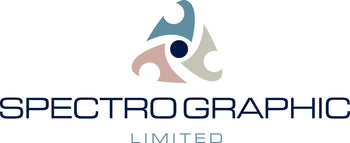
Nikon Eclipse E800 Fluorescence Microscope with Multi Teaching Head
High performance microscope for Fluorescence applications complete with teaching head and ports for camera.
Objective Nikon Plan Apo 5x,10x,20x,40x
Microscope eyepieces Nikon 10x/25
Teaching head eyepieces 10x/22
100 watt Mercury Vapour Lamp
Halogen for transmitted light with polarising
Benefits:
1. High-quality imaging: The microscope offers high-quality fluorescence imaging with excellent resolution and contrast, making it suitable for a wide range of applications.
2. Multi-teaching head: The multi-teaching head allows multiple users to view and manipulate specimens simultaneously, making it ideal for teaching and collaborative research.
3. Versatility: The microscope can be used for a wide range of applications, including fluorescence microscopy, brightfield microscopy, and phase contrast microscopy.
4. User-friendly: The microscope is easy to use, with intuitive controls and software that allow users to easily capture and analyze images.
- Nikon's Eclipse E800 biological research microscope was a versatile, ergonomically designed instrument that was one of the first models equipped with the revolutionary CFI60 optical system designed to ensure bright, sharp, crisp, and aberration-free images in all applications. Like the workhorse Eclipse E600, the E800 optical system features a tube lens focal length of 200 millimeters and advanced universal objectives for multiple observation techniques, including brightfield, darkfield, differential interference contrast (DIC), epi-fluorescence and phase contrast. Advances in optical design eliminate the need to change objectives in order to optimize contrast enhancing filters, annuli, or prisms while maintaining the same optical quality as dedicated lenses. The exceedingly long working distances, coupled with high numerical apertures of Nikon's CFI60 optics, allow microscopists to more easily handle even relatively thick specimens, provide superior resolution, and offer improved image capability with the elimination of optical aberrations. Axial and lateral chromatic aberrations are both corrected in the objective and tube lens, producing sharp, aberration-free images that are devoid of colour fringing and distortion at the viewfield periphery.
- Configuration and Setup: Orientation: Upright Illumination Type: Brightfield, Fluorescence, Polarising Fluescent Cubes: FITC, DAPI, G-2A Objectives: 5x, 10x, , 20x 40x Plan Apo DIC Light Sources: 12V 100W Halogen Lamp, 100W Mercury Lamp Stage: Mechanical XY This Nikon E800 Fluorescence Microscope is currently set up for Brightfield and Fluorescence studies.
1. Biological research: The microscope is commonly used in biological research to study cells, tissues, and organisms. It can be used to visualize subcellular structures, track cell behaviour, and analyse cellular processes.
2. Medical research: The microscope can be used in medical research to study the pathology of diseases, identify cellular and tissue abnormalities, and investigate the effects of drugs and treatments.
3. Neuroscience: The microscope is commonly used in neuroscience research to study the structure and function of neurons and neural circuits, and to investigate the mechanisms underlying behaviour and cognition.
4. Materials science: The microscope can be used in materials science to study the properties of materials at the nanoscale, and to investigate the structure and composition of materials.
